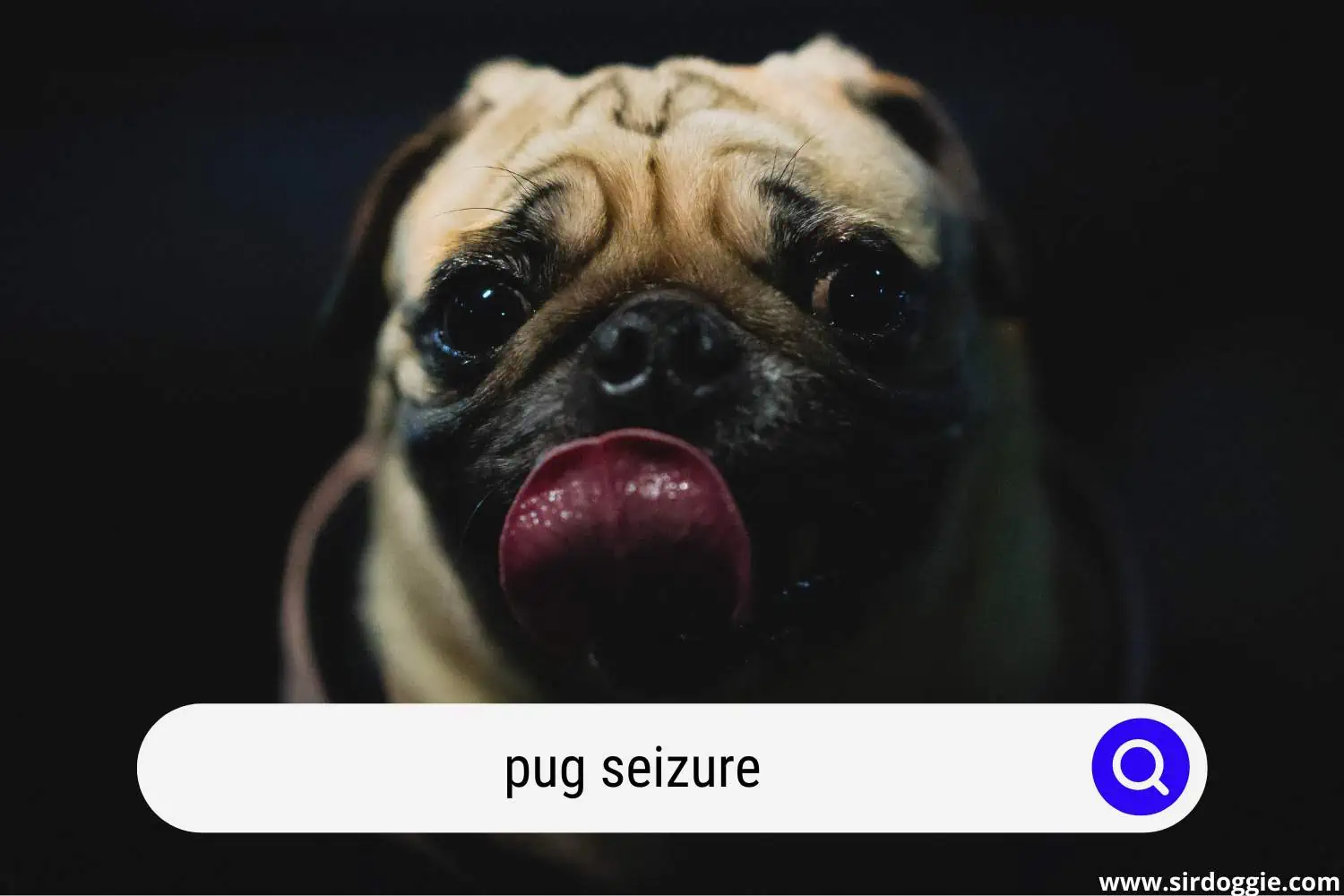Are Pugs Prone To Seizures?
Pugs, as adorable as they look, are prone to a brain condition with unclear reasons, so you may be wondering are pugs prone to seizures? Only Pugs are affected by this neurological condition, which can be deadly. Here are the indications and symptoms of encephalitis.
The lovely, wrinkled Pug makes a fantastic family companion, but sadly, some of these dogs have Pug dog encephalitis, which is a neurological condition. Encephalitis is a type of brain inflammation that causes discomfort, convulsions, and eventually death.

Pug Dog Encephalitis Symptoms
Because Pug dog encephalitis affects the brain, the majority of symptoms are neurological, such as:
- Changes in behavior
- Seizures
- Stiffness in the neck
- A tilt of the head
- Rubbing the back of the head against walls or other items
- Confusion or disorientation
- Coordination problems
- Circumnavigating
- Depression
- Lethargy
- Weakness
- Blindness
Pug dog encephalitis symptoms generally increase quickly (in a couple of days or weeks) and lead to abrupt death, usually because of seizures. There are some situations, where Pug may live a little longer if seizures are under control using anticonvulsant medicines. All infected Pugs will eventually bow to the illness, generally within months of exhibiting signs.

What Is Pug Dog Encephalitis, And How Does It Affect Your Dog?
Necrotizing Meningoencephalitis (NME) is a severe and incurable illness that might cause infection and death of brain tissue. Pug dog encephalitis is the vernacular name for Necrotizing Meningoencephalitis. Although Pugs are the most infected, other tiny breed dogs such as Chihuahuas can also be impacted.
Young adults are the most typically afflicted, with most cases detected under seven years old. This disorder is most common in young, fawn-colored female Pugs.
The Condition’s Diagnosis
If your dog is showing signs of Pug encephalitis, you should take him to the clinic at the same moment. Because other disorders might appear with identical symptoms, your veterinarian will suggest a series of diagnostic tests to see what’s causing your dog’s symptoms.
The only approach to diagnose this problem is to sample brain tissue by biopsy or necropsy.
A comprehensive physical examination is part of the test, as well as your vet, is going to perform another couple of tests:
Blood test – A full blood count and biochemistry test to assess organ function and rule out underlying illnesses such as liver disease or toxin exposure, both of which can cause similar clinical symptoms.
Diagnostic imaging – A type of imaging that vets are using to diagnose the brain and spinal cord of your dog. That may be evaluated using imaging techniques such as MRI. That frequently requires a referral to a specialist. This operation will almost certainly require your dog to be under general anesthesia.
Tape for CSF – A sample of your dog’s cerebrospinal fluid (CSF), which surrounds the brain and spinal cord, may be recommended by your veterinarian. Under a microscope, the cells in this fluid can be examined to rule out other kinds of meningitis and encephalitis that are causing this similar symptom.
What Is The Difference Between A Pug Seizure And Epilepsy?
One of the most reported neurological diseases in dogs is seizures. A seizure, also known as a convulsion or a fit, is an uncontrolled disruption of normal brain function.
Epilepsy is a word used to describe seizures that occur repeatedly. Seizures in epilepsy can be solitary or clustered, and they can be unpredictable or happen at regular intervals.
Most Common Pug Health Problems
Pugs require a nutritious, nutritionally balanced diet to keep their waistlines in check, due to their lack of impulse control when it comes to eating.
By adding Dig-In Digestive Gravy Powder to your dog’s diet, you’ll not only improve the flavor of their food, but you’ll also help them cope with the symptoms of food allergies, including stomach distress, skin rashes, and ear irritations. Daily exercise is also beneficial to your Pug’s health, but don’t overdo it.
Issues with the lungs
The excess soft tissue in the airways of dogs with a shortened skull length, such as Pugs, causes Brachycephalic Airway Obstruction Syndrome (BAOS), which can block airflow. Even moderate quantities of exertion might result in your dog gasping for air and battling to breathe.
It’s critical to see your veterinarian if you observe these signs. For the impact of this ailment, you may sometimes mitigate. Keep your pug cool in hot weather, avoid excessive exertion, and provide enough freshwater.
Problems with the eyes
Pugs’ protruding eyes are sadly susceptible to a variety of significant eye problems that can cause persistent discomfort and suffering. Pugs pose a significant risk of accidentally hurting their eyes by rushing into barriers due to their big eyes.
Bumping into furniture and other objects, a discolored eye discharge, weeping eyes, discolored patches on the eye, and any strange looks in or around the eye are signs of additional eye problems.
It’s crucial to contact your veterinarian as soon as you observe any of these signs since prompt intervention is generally required.

Are pugs prone to seizures?
Seizures can occur in pugs, and if this occurs, you should visit your veterinarian as soon as possible to establish the cause. They are the most prevalent sign of Epilepsy in Pugs, which you can manage with medication and regular medical visits.
Pug Dog Encephalitis is a genetic brain inflammation that affects Pugs from infancy to middle life. Seizures are the most common sign of PDE, although dogs with the illness may also appear sluggish, listless, or lack motor coordination.
Medication is the answer to managing seizures and decreasing inflammation in conjunction with your veterinarian. Even though these health conditions need competent medical care and a focused treatment strategy, most Pugs live a long and happy life.
Always take your Pug to the vet as soon as you notice any symptoms or behavioral changes. Prompt treatment will help your furry friend get back to being their joyful, charming self as soon as possible.

Final Words On Are Pugs Prone To Seizures?
On the question are pugs prone to seizures, yes they are and, at the first sign of symptoms, you should call your veterinarian. Because Pug dog encephalitis isn’t the primary cause of seizures in Pugs, your dog will most likely go through testing for epilepsy, brain tumors, and poisoning as well. If the vet discovers Pug dog encephalitis, supportive treatment will begin right away.
Related Reading: Why Do Pugs Look Sad?

Family Dog Expert Author
Hi there! I’m Stuart, a devoted dog lover and family dog expert with over a decade of experience working with our furry companions. My passion for dogs drives me to share my knowledge and expertise, helping families build strong, loving bonds with their four-legged friends. When I’m not writing for SirDoggie, you’ll find me hiking, playing with my beautiful dog, or studying music.